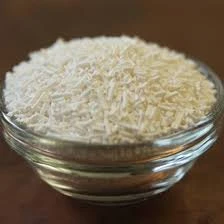
direct and indirect food additives
Direct and Indirect Food Additives Understanding Their Roles in Food Safety and Quality
Food additives have become an integral part of the modern food system, encompassing a wide range of substances that enhance the quality, safety, and shelf life of food products. These additives can be broadly classified into two categories direct and indirect food additives. Understanding the differences between these two types is essential for both consumers and food manufacturers.
Direct Food Additives
Direct food additives are substances that are intentionally added to food products for a specific purpose. They play a crucial role in enhancing flavor, texture, color, and overall shelf life. Common examples of direct food additives include preservatives, flavor enhancers, colorings, and stabilizers.
For instance, salt is a direct food additive that not only enhances flavor but also acts as a preservative. Similarly, citric acid is often added to beverages to serve as a flavoring agent and to help maintain acidity, which in turn preserves freshness. Color additives like beta-carotene are used to give foods a visually appealing hue, making them more attractive to consumers. The FDA and other regulatory bodies strictly monitor the use of these additives to ensure they are safe for consumption and used within acceptable limits.
Indirect Food Additives
direct and indirect food additives

In contrast to direct food additives, indirect additives are substances that may unintentionally migrate into food products from packaging, processing equipment, or storage containers. These additives are not deliberately added to food but can be present as a result of interactions during storage or handling. Examples of indirect food additives include certain chemicals from food packaging materials, and lubricants from food processing machinery.
The presence of indirect additives raises concerns regarding food safety, as these substances may pose potential health risks if they leach into food in significant quantities. Regulatory agencies set limits and guidelines to ensure that the levels of these substances in food remain within safe thresholds. For instance, certain plastics used in food packaging are designed to limit the migration of harmful chemicals into food products, safeguarding consumer health.
Importance of Regulation and Consumer Awareness
Both direct and indirect food additives are subject to rigorous regulatory scrutiny. Agencies like the FDA in the United States conduct extensive research to assess the safety of these substances and establish usage guidelines. This regulatory framework is vital for protecting consumers and promoting confidence in the food supply.
Consumers should also be proactive in their understanding of food additives. Reading food labels, being aware of common additives and their purposes, and staying informed about regulatory changes can empower consumers to make healthier food choices.
In conclusion, both direct and indirect food additives play significant roles in the food industry. While direct additives enhance food products intentionally, indirect additives come from external sources and can unintendedly affect food safety. Through regulation and consumer education, the food industry continues to strive for a balance between enhancing food quality and ensuring safety for consumers. As we become more aware of what goes into our food, we can better appreciate the intricacies of food production and the importance of informed choices.
-
Pure Sodium Dichloroisocyanurate Dihydrate | Powerful DisinfectantNewsAug.29,2025
-
Industrial Chemicals: Quality & Purity for Every IndustryNewsAug.28,2025
-
Nitrile Rubber Honoring Strict Production StandardsNewsAug.22,2025
-
Aspartame Ingredients Honoring Food Safety ValuesNewsAug.22,2025
-
Fertilizer for Balanced Plant NutritionNewsAug.22,2025
-
Cyanide Gold Processing with High Purity AdditivesNewsAug.22,2025
-
Formic Acid in Textile Dyeing ApplicationsNewsAug.22,2025
Hebei Tenger Chemical Technology Co., Ltd. focuses on the chemical industry and is committed to the export service of chemical raw materials.
-

view more DiethanolisopropanolamineIn the ever-growing field of chemical solutions, diethanolisopropanolamine (DEIPA) stands out as a versatile and important compound. Due to its unique chemical structure and properties, DEIPA is of interest to various industries including construction, personal care, and agriculture. -

view more TriisopropanolamineTriisopropanolamine (TIPA) alkanol amine substance, is a kind of alcohol amine compound with amino and alcohol hydroxyl, and because of its molecules contains both amino and hydroxyl. -

view more Tetramethyl Thiuram DisulfideTetramethyl thiuram disulfide, also known as TMTD, is a white to light-yellow powder with a distinct sulfur-like odor. It is soluble in organic solvents such as benzene, acetone, and ethyl acetate, making it highly versatile for use in different formulations. TMTD is known for its excellent vulcanization acceleration properties, which makes it a key ingredient in the production of rubber products. Additionally, it acts as an effective fungicide and bactericide, making it valuable in agricultural applications. Its high purity and stability ensure consistent performance, making it a preferred choice for manufacturers across various industries.





